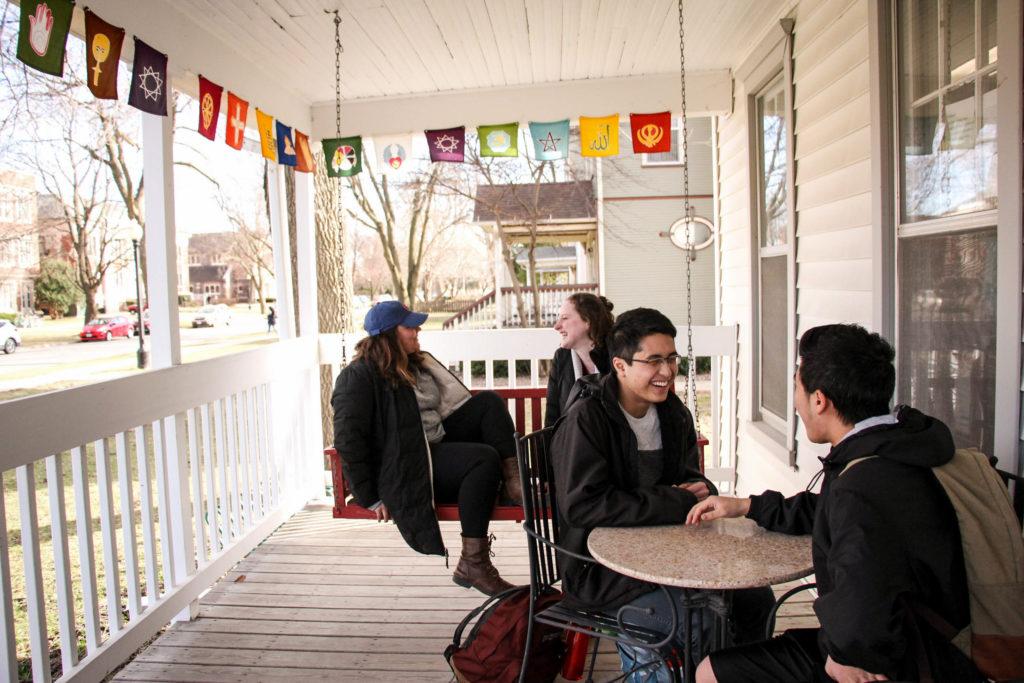
Since news broke on Feb. 16 that the new site for the Center for Religion, Spirituality and Social Justice (CRSSJ) would feature much less space for Muslim and Hindu students, there has been strong public pushback from the affected students and the College community. Behind the scenes, members of the administration have been working to correct the lack of space allotted in the plan. Now, new plans for the building are being evaluated which will ensure that no space is lost, but students are still skeptical of the administration’s intentions.
When students from the Hindu and Muslim community found out about the new plan, many were hurt by what they viewed as disrespect by the college.
“I read that article right before I went into class, and I couldn’t concentrate at all … I just remember felling horribly let down and upset at the lack of the respect that the school had for religious diversity, and I definitely know that while those feelings were valid, that what I could do… was to have a concrete action plan,” said Mithila Iyer ’19.
Iyer was one of a number of students that took action, forming the Intercultural Coalition for Religious Rights (ICRR) in the following days. They created a petition addressed to Kate Walker, Treasurer of the College, demanding a new plan with space for both Hindus and Muslims. As of March 9, 304 people had signed the petition. The group also spoke at Campus Council and has met with Reverend Deanna Shorb, Dean of Religious Life.
Even before student response to the plan, the administration anticipated pushback and had begun to act. On Feb. 14, Shorb spoke with The S&B for the first article on this issue. According to Kate Walker, it was on the following day that Shorb emailed Kington with concerns about the plan, who then passed on Shorb’s concerns to a group of senior staff. Among them were Walker and Mike Latham, Dean of the College, who were authorized to change the plan and have been working to do so.
“Last Thursday, Dean Latham, Deanna Shorb, Rick Whitney [Assistant Vice President for Facilities Management] and myself met with the [initial] design, so that we could look at doing something different … with the understanding that we’re no longer talking about this being a temporary home,” Walker said. “So we looked at doing an addition on the back of the house, and [creating] two new spaces, one for the Muslim prayer room and one for the Hindu prayer room. And we’ve got two new designs that we’ve got out for bid and if the bids come in within a reasonable range, then we’ll go ahead and proceed with that.”
The goal is to have plans finalized by the end of March, and Walker said that if two designs currently being considered are too expensive, the college would work with the contractors to create a cheaper option that still had spaces for Hindu and Muslim students.
The college has presented an image of itself as welcoming and protecting cultural diversity. However, many students have long felt that was not the case, and the news about the CRSSJ only confirmed those feelings.
“You don’t show that you equally value all cultures and all religions when you propose a plan that diminishes our already tiny presence on campus,” Iyer said. “I’ve seen people cry, I’ve seen people just say, ‘what is the point?’ because they’re just so tired of having to fight to for cultural diversity in this place.”
Walker is aware that the announcement of the initial plan has tarnished the image that the College has worked hard to protect.
“This is a place that champions inclusiveness and diversity, and to demonstrate by behavior something completely different is such a disconnect. We don’t want that to ever happen again,” Walker said. “I hope that folks will give us the chance to demonstrate that we are really true to our word and we made a process mistake.”
What exactly that process mistake was remains to be determined. On Feb. 15, Director of Facilities Management (FM) Rick Whitney, who was in charge of finding a new space, said that he was not aware of the existing Muslim Prayer Space.
“We’re able to basically accommodate each of the types of spaces, and the quantities, that are currently in 1233 [Park St.], into the new house,” Whitney said.
Walker is planning on conducting a post-mortem once the new plans are finalized, which is currently her main focus.
“There are definitely lessons to be learned in terms of how to go about this discussion, how to ensure that we’re listening to all the right voices,” Walker said. “I’m guessing … there are things we could and should have done differently.”
One thing that Iyer points to as going wrong in the process is a lack of student involvement.
“I think definitely what they could have done to avoid this is to go along from the beginning with student input,” Iyer said.
However, Walker is aware of how student involvement might prevent a similar crisis in the future.
“I have asked whether there was a possibility that we should have more students involved in these kinds of processes … so that it’s not a matter of putting something forward and having it critiqued but it’s a collaborative conversation from the start.”
In the meantime, Iyer and the other concerned students are trying to meet with President Raynard Kington to ensure that, at the very least, the second version of the plan meets their needs.
“What we are asking for… is knowledge of what is going on [about] how those spaces are being determined,” Iyer said.





















































